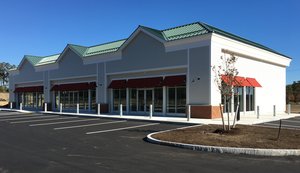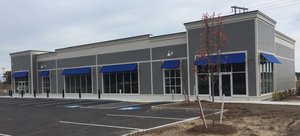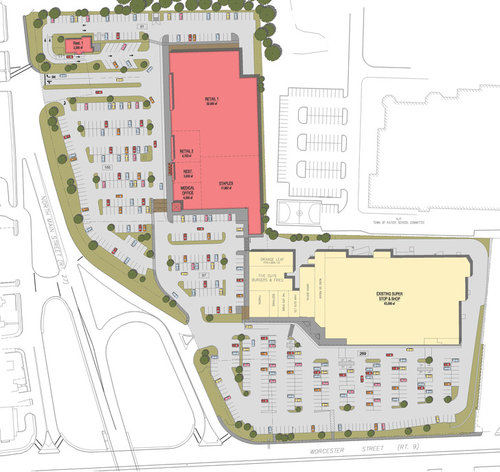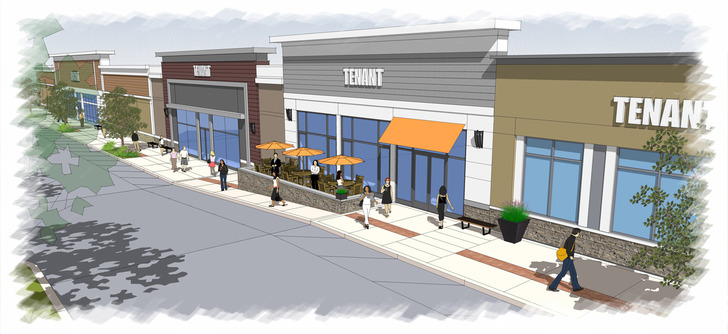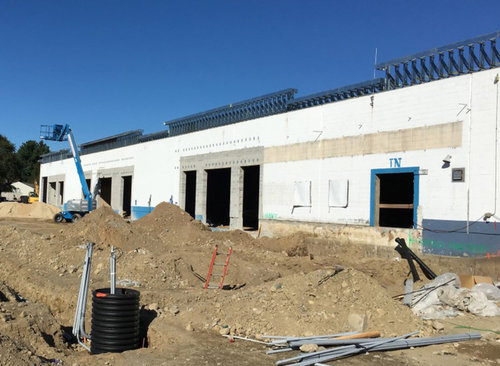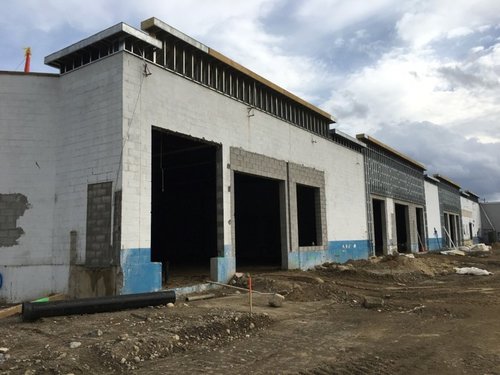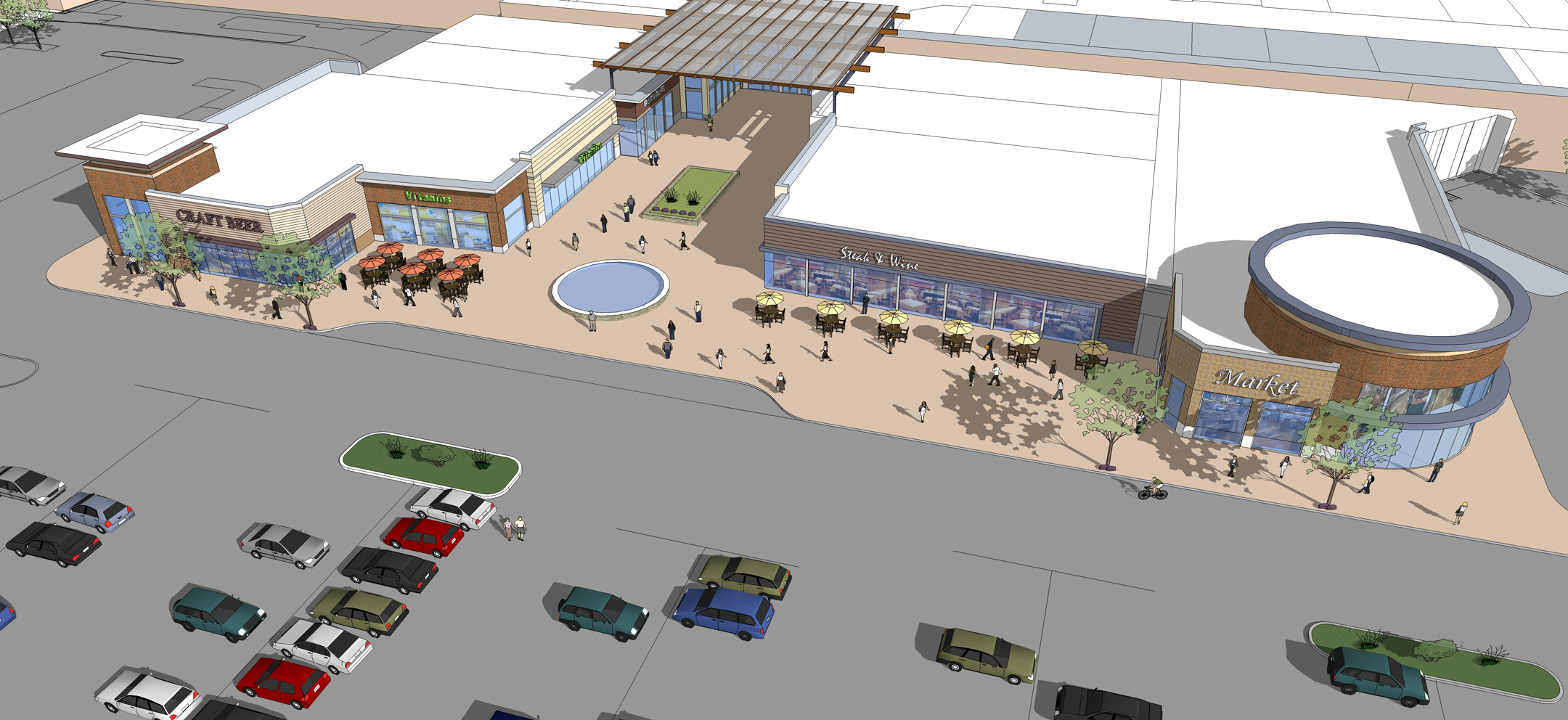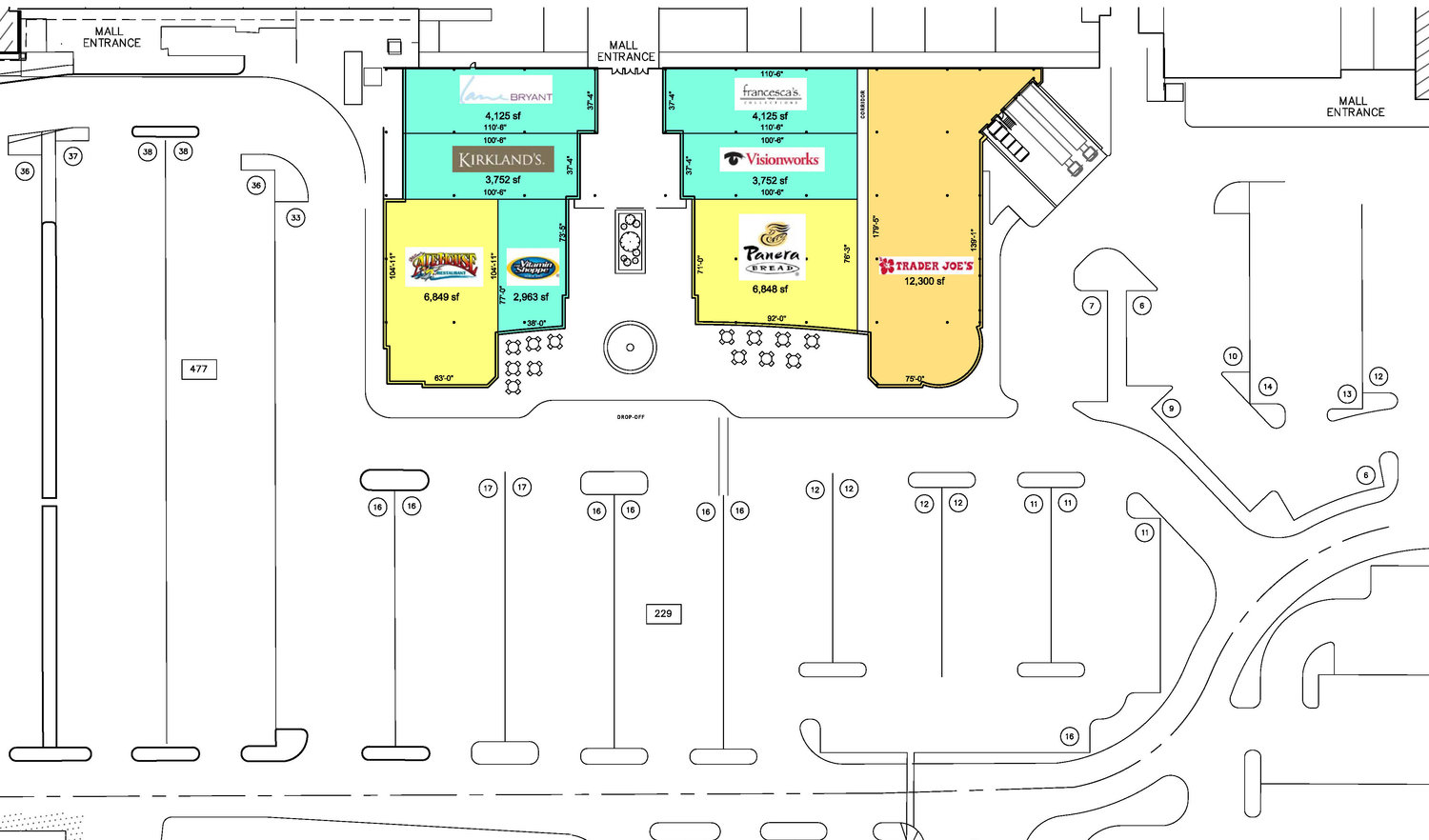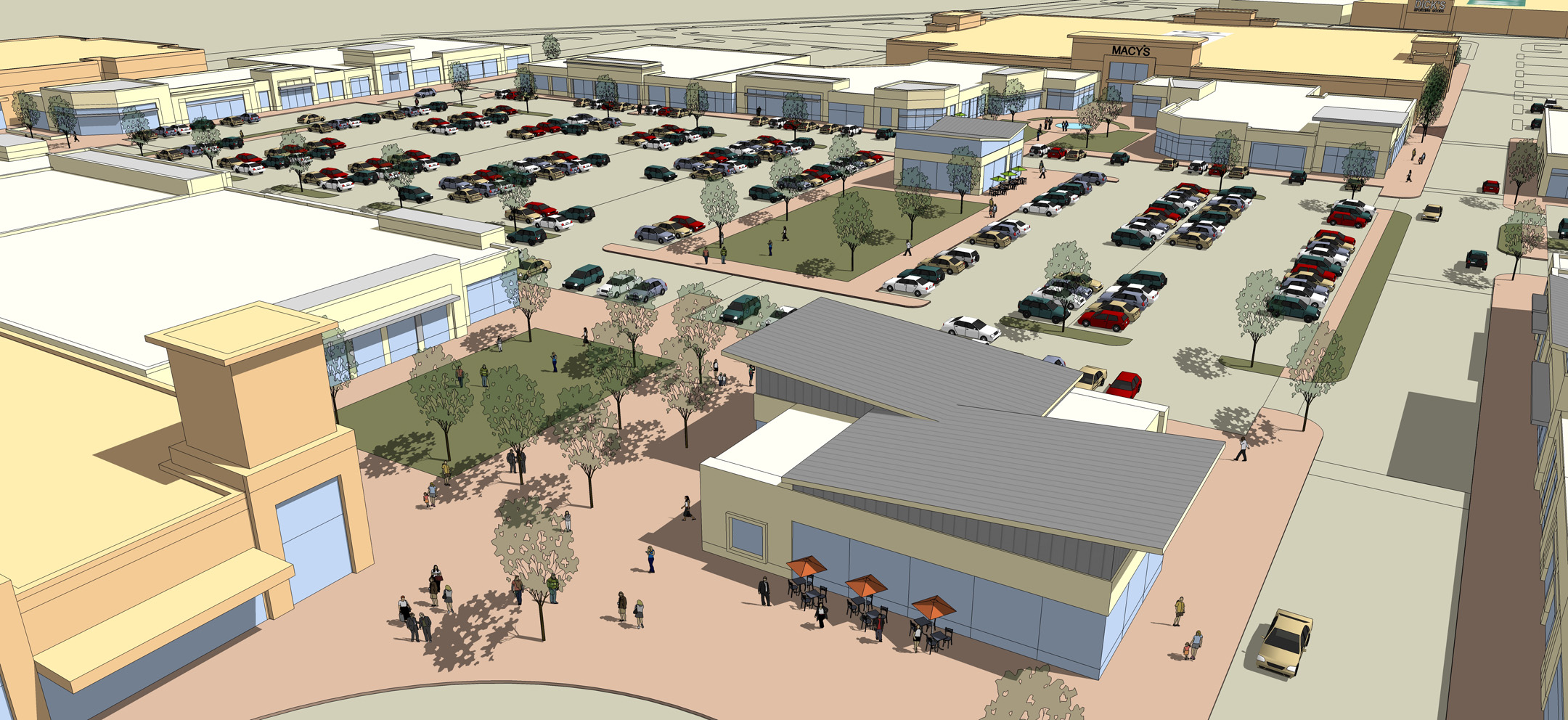Wayland Town Center: The Complexities of Phasing in a Master Plan
/2017 Master Plan and Google Aerial
It has been 13 years since the master plan for the Wayland Town Center project was first conceived, and the project is slowly taking shape, having weathered some difficult economic times. It is always interesting to see a “vision” come to life and witness the challenges presented at each phase of a project’s evolution. In Wayland, one of the biggest issues from a place-making perspective was that, for an extended period of time, there was only one side of “Main Street” completed. So, for a project that was built around a fundamental Town Center principle of creating a lively pedestrian shopping street, it’s signature experience was not fully intact.
Today, the second side of the street has taken form and, while there are still quite a few leases to fill, there are moments that make for quite an enjoyable environment. The devil is always in the details, however, and master-plan visions such as this are always most successful when they are paired with carefully considered architectural and site design guidelines. In working with KGI Properties and The Congress Group to help facilitate the Town’s acceptance of a new Mixed-Use Overlay District on this former Raytheon site, it became clear that the integration of guidelines would be critical to ensuring that the scale and level of articulation of the project would be realized successfully.
This attention to detail can be seen in many places in the Town Center such as in the quality of the streetscapes that have paving, lighting, signage, landscaping and urban furniture that all contribute positively to defining a walkable environment. In addition, the use of pedestrian mews to connect parking areas behind the buildings to the main shopping street is very effective. These mews were purposefully designed to have storefronts that wrap the corner. While there are some sections of these passageways that are compromised by collections of meters and utility boxes that have not been effectively screened, they remain important connectors in the center. There is a pedestrian connection that was eliminated on the north side of the street, presumably to accommodate the Ace Home & Design store, and even this subtle variation from the master plan has an impact on the quality of the pedestrian environment in this area.
In general, the architecture of the “Main Street” environment is quite successful. Retail storefronts are detailed to closely follow design guidelines that were based on a New England vernacular found in neighboring village centers such as Concord. While there is not as high a level of architectural detail on the rear facades of the buildings, facing the parking fields, there is an adequate level of visual interest incorporated. This was deemed critical to the quality of the environment since it was anticipated that buildings would be approached from multiple sides. There are a few areas where faux second floors are revealed by truncated roofscapes and cornices, but the buildings do, by and large, maintain a well-conceived scale and sense of completeness.
A few areas in the Town Center feel as though they have come up a little short of the original vision but, there is still time and the hope that future phases combined with a more complete leasing environment will make the project feel more holistic. The public green, which does host concerts, has some unexpected landscaped berms that effectively cut it off visually from the rest of the shopping environment and limit its suitability for the full range of active uses. In addition, the housing along the northern edge of the green does not have the presence that was originally envisioned and fails to provide adequate definition to the space. This may be remedied to some degree once the civic building slated for the head of the green is developed, helping to complete the mixed-use equation.
The Stop & Shop that anchors the east end of the project is fronted by a large parking field that, while certainly mandated by the lease, lacks the quality landscaping one would expect in a town center environment. The impact of this nondescript parking area is exasperated by the fact that adjacent to the Stop & Shop there is a key retail block that remains unbuilt along the project’s main spine. Building a small retail pavilion on this parcel would help buffer the parking world from the pedestrian shopping street. As anticipated, the incorporation of larger format stores, together with their parking and loading requirements, into a pedestrian-scaled town center environment demands careful execution.
The developers have certainly faced some unanticipated challenges, including the reduced availability of waste treatment capacity, which has limited their ability to incorporate the desired mix of restaurant uses. But, all in all, it does feel as though Wayland has embraced its new Town Center and that this is due, to a large degree, to the quality placemaking framed in the original master-plan.










